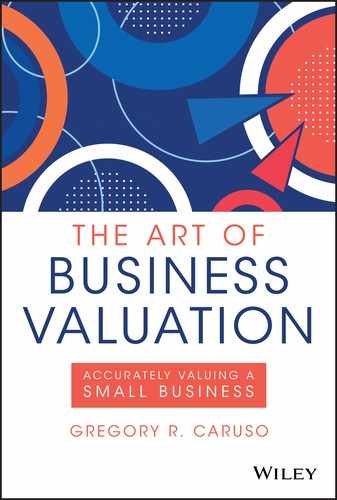Book Description
Starting from the practical viewpoint of, “I would rather be approximately right than perfectly wrong” this book provides a commonsense comprehensive framework for small business valuation that offers solutions to common problems faced by valuators and consultants both in performing valuations and providing ancillary advisory services to business owners, sellers, and buyers. If you conduct small business valuations, you may be seeking guidance on topics and problems specific to your work. Focus on What Matters: A Different Way of Valuing a Small Business fills a previous void in valuation resources. It provides a practical and comprehensive framework for small and very small business valuation (Companies under $10 million of revenues and often under $5 million of revenues), with a specialized focus on the topics and problems that confront valuators of these businesses.
Larger businesses typically have at least Reviewed Accrual Accounting statements as a valuation starting point. However, smaller businesses rarely have properly reviewed and updated financials. Focus on What Matters looks at the issue of less reliable data, which affects every part of the business valuation. You’ll find valuation solutions for facing this challenge.
As a small business valuator, you can get direction on working with financial statements of lower quality. You can also consider answers to key questions as you explore how to value each small business.
- Is this a small business or a job?
- How much research and documentation do you need to comply with standards?
- How can you use cash basis statements when businesses have large receivables and poor cutoffs?
- Should you use the market method or income method of valuation?
- Techniques that improve reliability of the market method multiplier
- How might you tax affect using the income method with the advent of the Estate of Jones and Section 199A?
- Do you have to provide an opinion of value or will a calculation work?
- How do you calculate personal goodwill?
- As a valuation professional how can you bring value to owners and buyers preparing to enter into a business sale transaction?
- How does the SBA loan process work and why is it essential to current small business values?
- What is the business brokerage or sale process and how does it work?
- How do owners increase business value prior to a business sale?
Table of Contents
- Cover
- Foreword
- Preface
- Acknowledgments
- CHAPTER 1: What Is My Business Worth?
- CHAPTER 2: Valuation Basics
- CHAPTER 3: Why Is Valuing Small Businesses Different from Valuing Larger Businesses?
- CHAPTER 4: Assessing the Subject Company
- CHAPTER 5: Normalization of Cash Flows
- CHAPTER 6: Market Approaches
- OBJECTIONS TO THE MARKET METHOD
- WEIGHTING THE CASH FLOW
- THE MARKET METHOD: ESTIMATING THE MULTIPLIER
- THE MARKET METHOD: SELECTING THE COMPANY INDUSTRY
- SORTING THE INDUSTRY DATA SET BY CASH FLOW
- ANALYSIS OF SORTED DATA SET
- SELECT BY TRANSACTION TYPE OR NOT?
- SELECTING THE MULTIPLIER
- ADJUSTMENTS TO THE CALCULATED INDICATION OF MARKET METHOD VALUE
- STATISTICS AND THE MARKET METHOD
- NOTES
- CHAPTER 7: Asset Approaches
- CHAPTER 8: Income Approaches
- WHO IS AN “INVESTOR”?
- CASH FLOW FOR INCOME APPROACHES
- CAPITALIZATION OF EARNINGS METHOD
- MORE CASH FLOW CONSIDERATIONS
- CASH FLOW FORECASTS UNDER THE DISCOUNTED CASH FLOW METHOD
- CALCULATING A DISCOUNT RATE OR CAP. RATE
- COST OF CAPITAL BUILDUP METHOD (BUM): CALCULATING A DISCOUNT RATE
- CALCULATION OF A CAPITALIZATION RATE
- ESTIMATING VALUE USING THE CAPITALIZATION OF EARNINGS METHOD
- WEIGHTED AVERAGE COST OF CAPITAL
- ESTIMATING VALUE USING THE DISCOUNTED CASH FLOW METHOD
- NOTES
- CHAPTER 9: Valuing Partial Interests in a Business
- CHAPTER 10: Goodwill and the Small Business
- CHAPTER 11: Accounting Issues with Small and Very Small Businesses
- CHAPTER 12: Details for Business Valuators
- CHAPTER 13: Assisting the Small Business Buyer or Seller
- CHAPTER 14: How to Review a Business Valuation
- CHAPTER 15: Final Thought
- About the Website
- Index
- End User License Agreement
